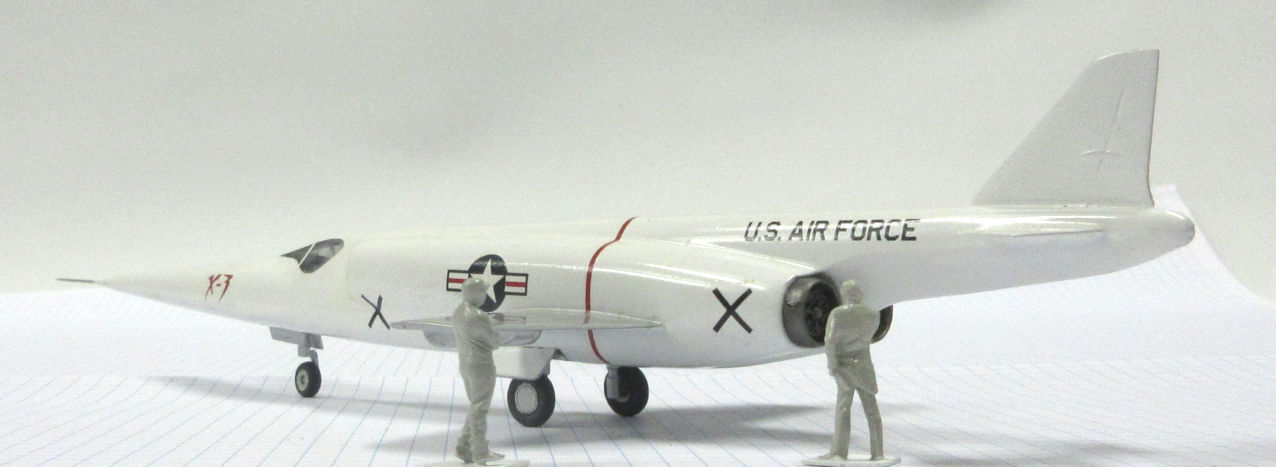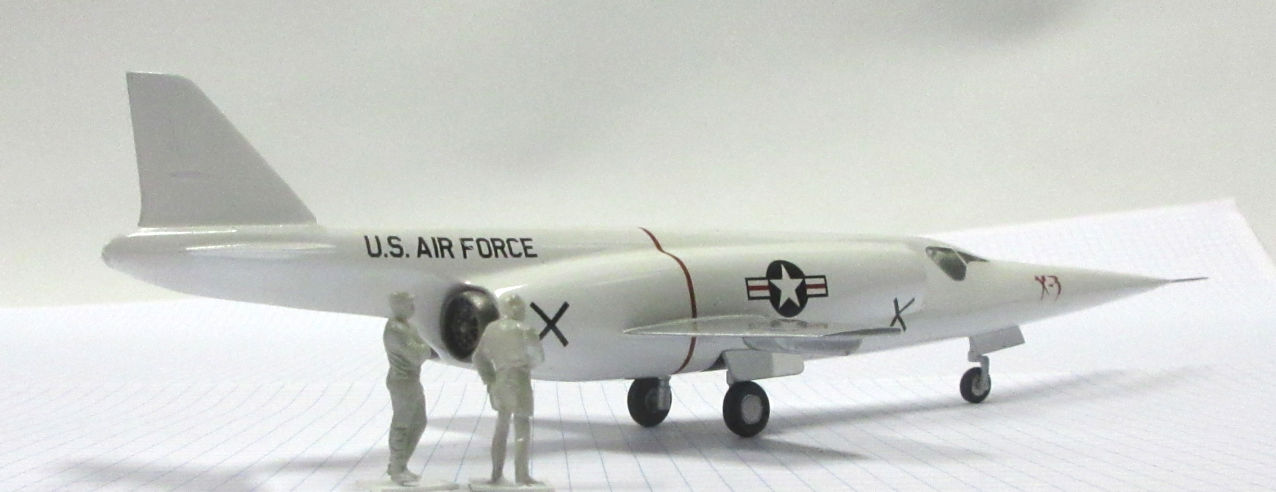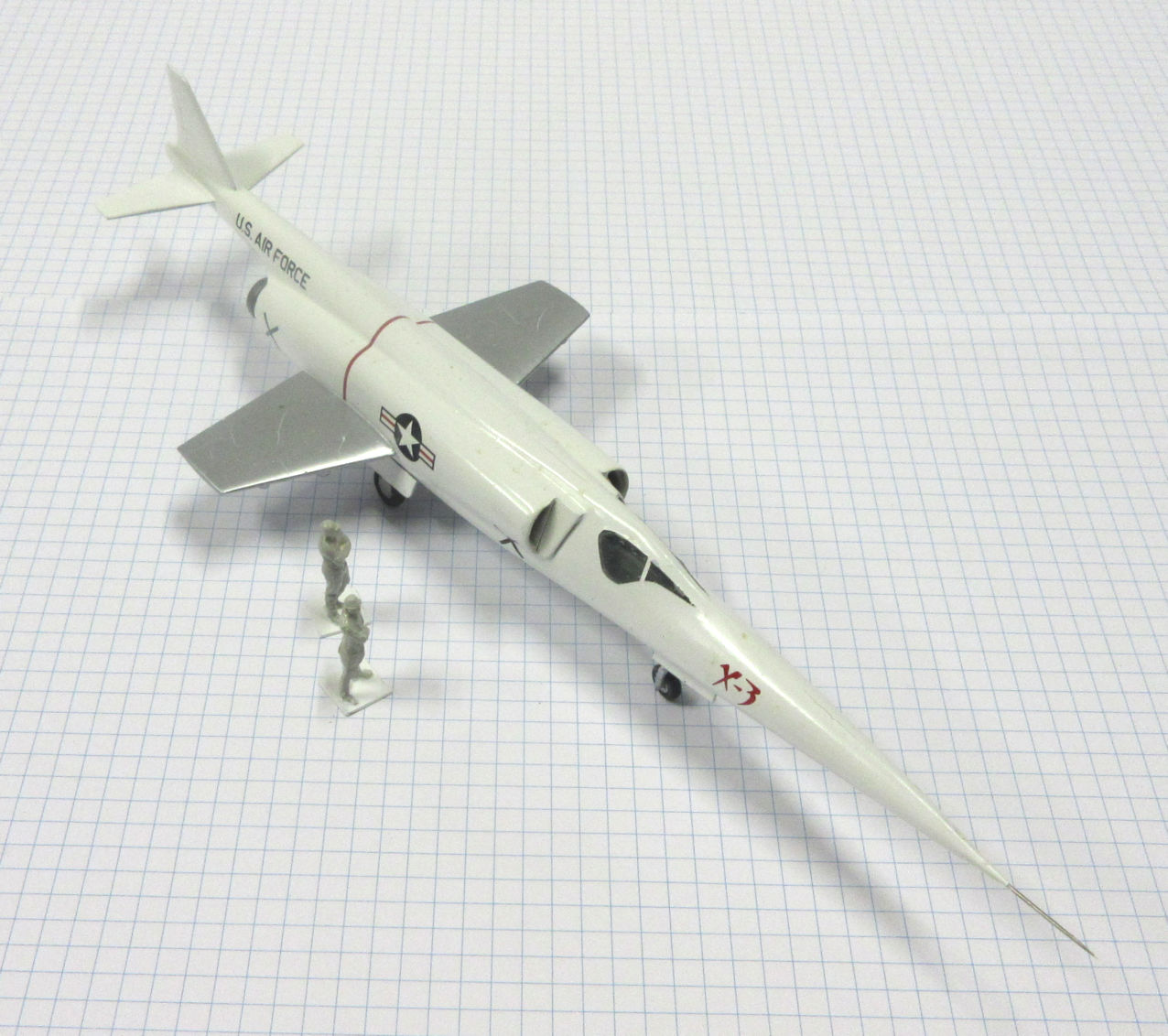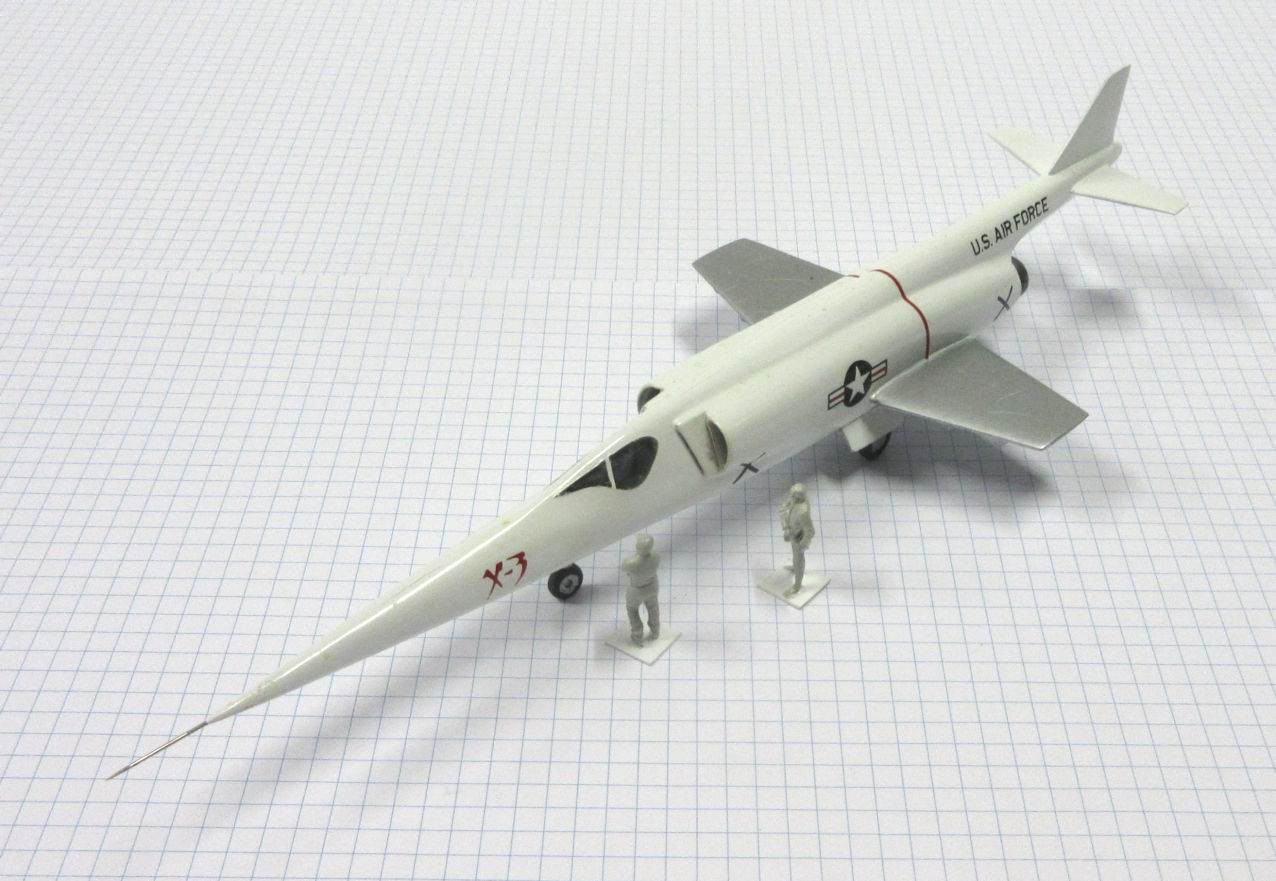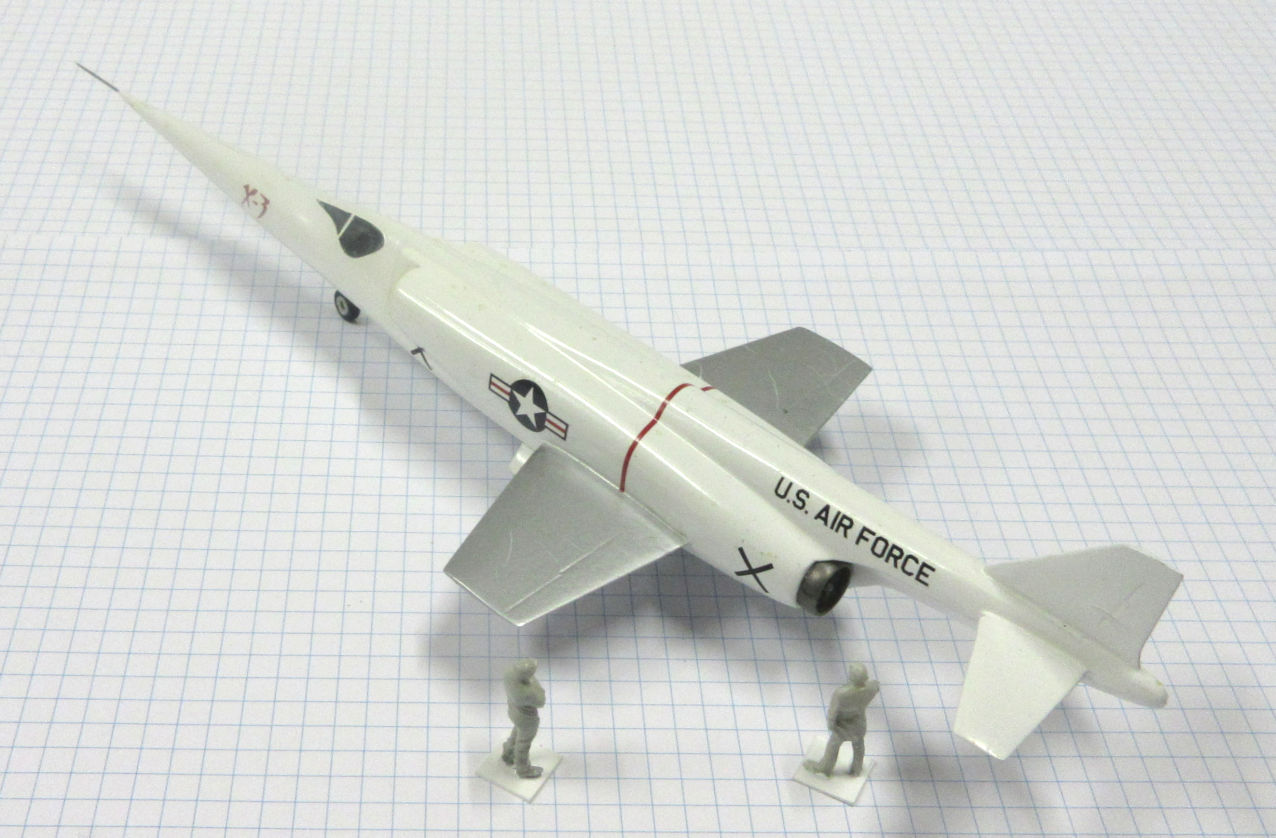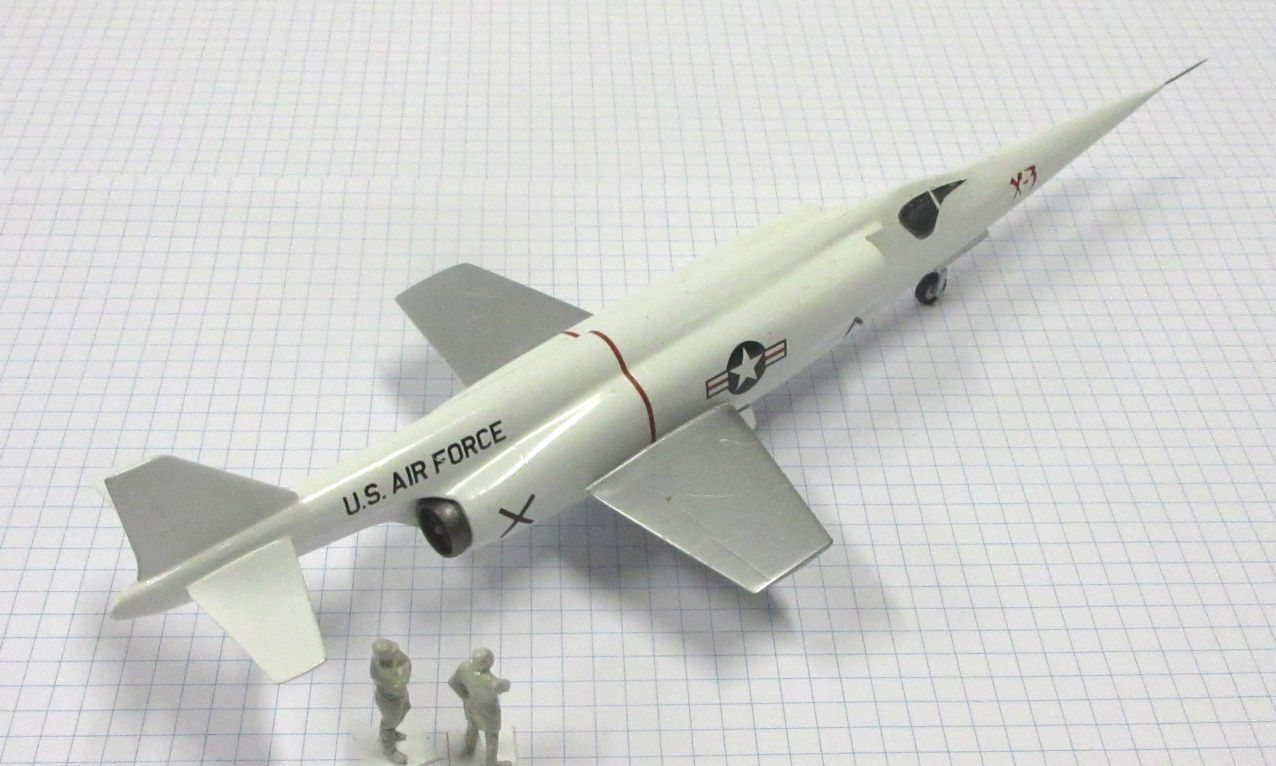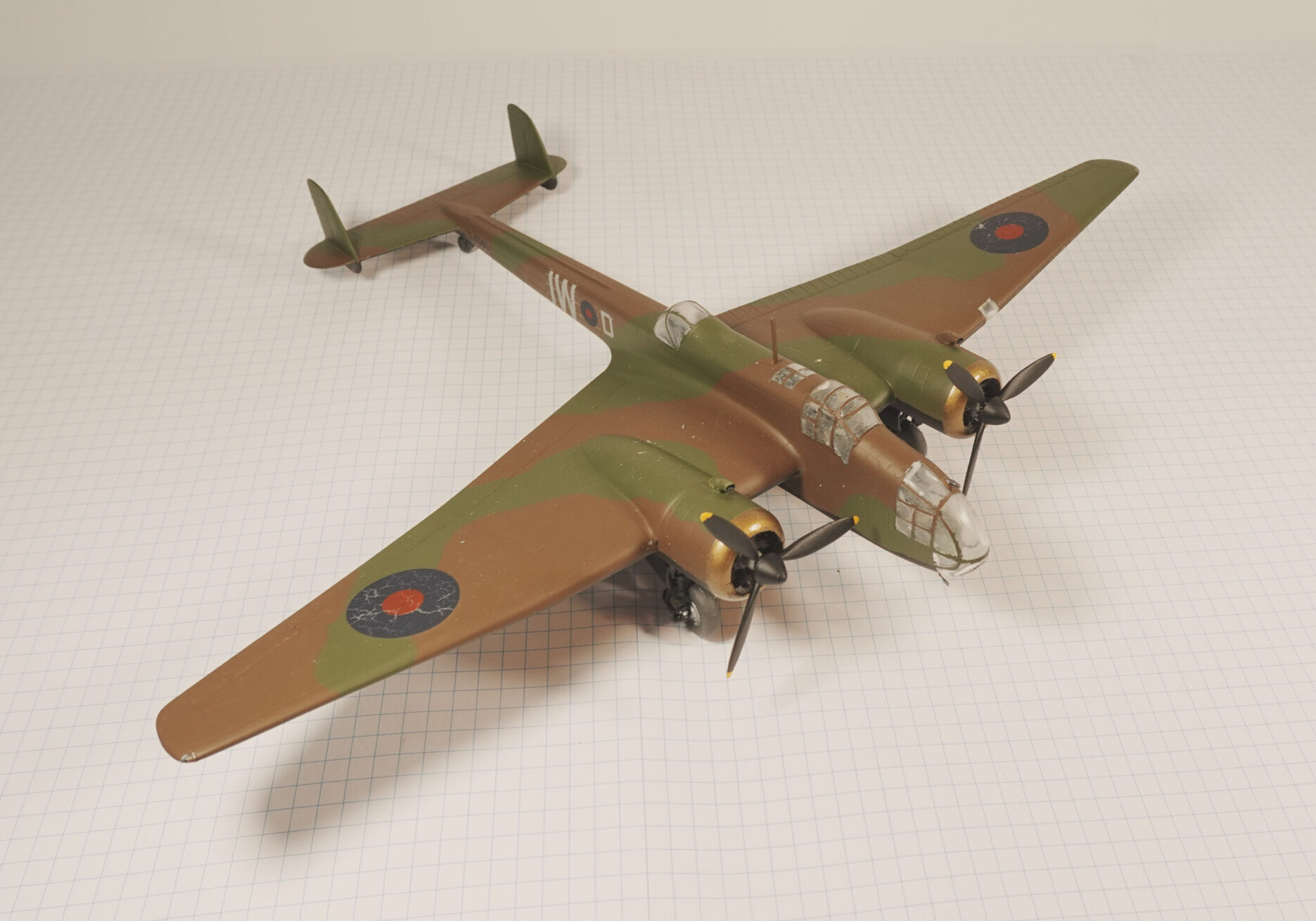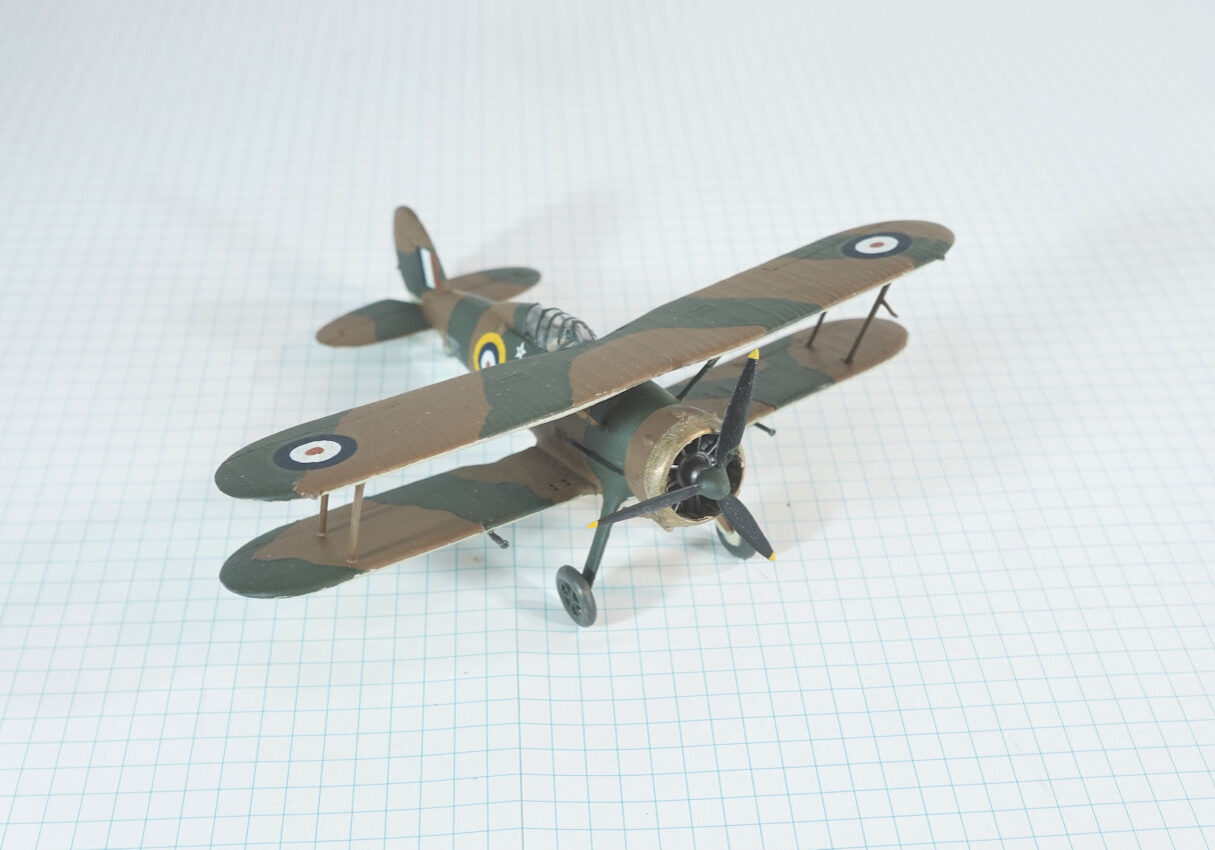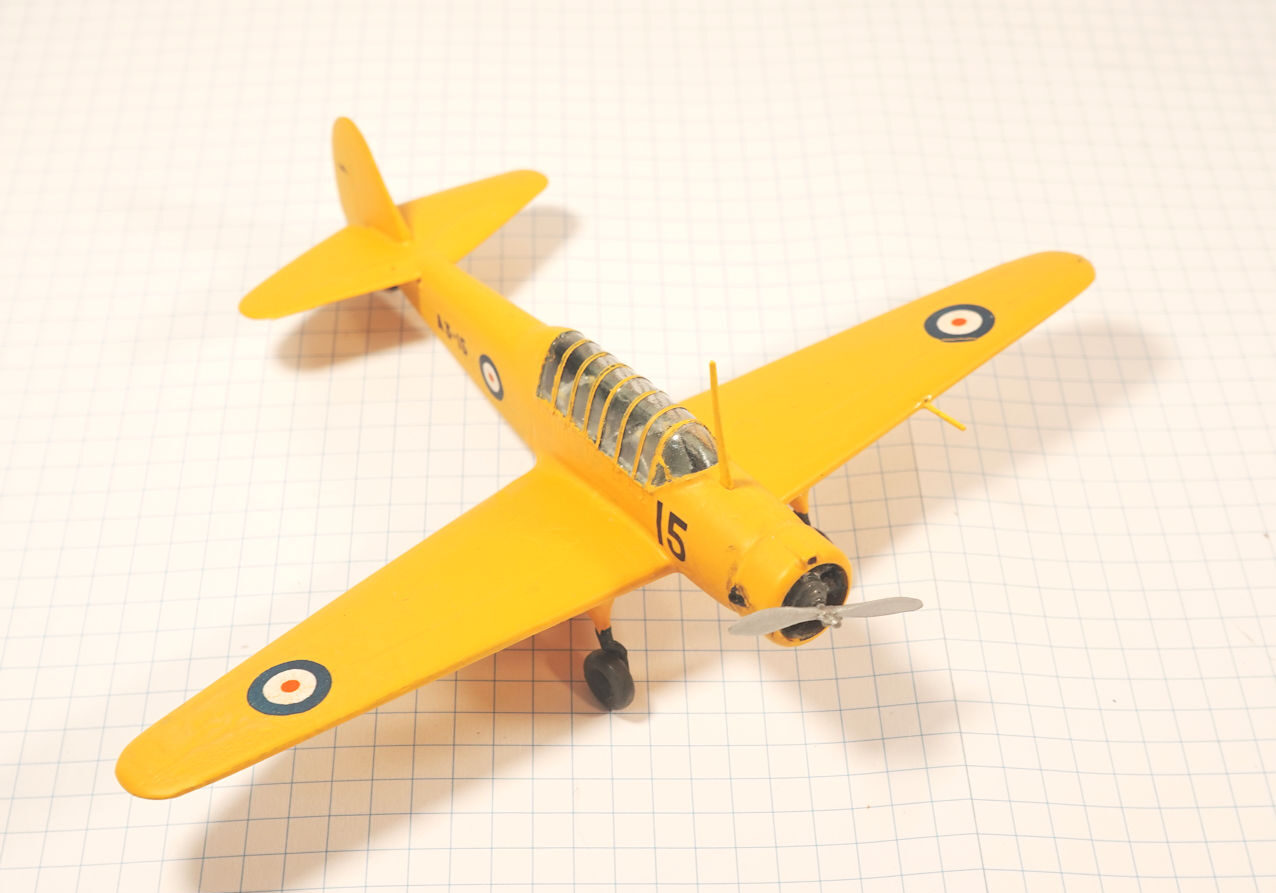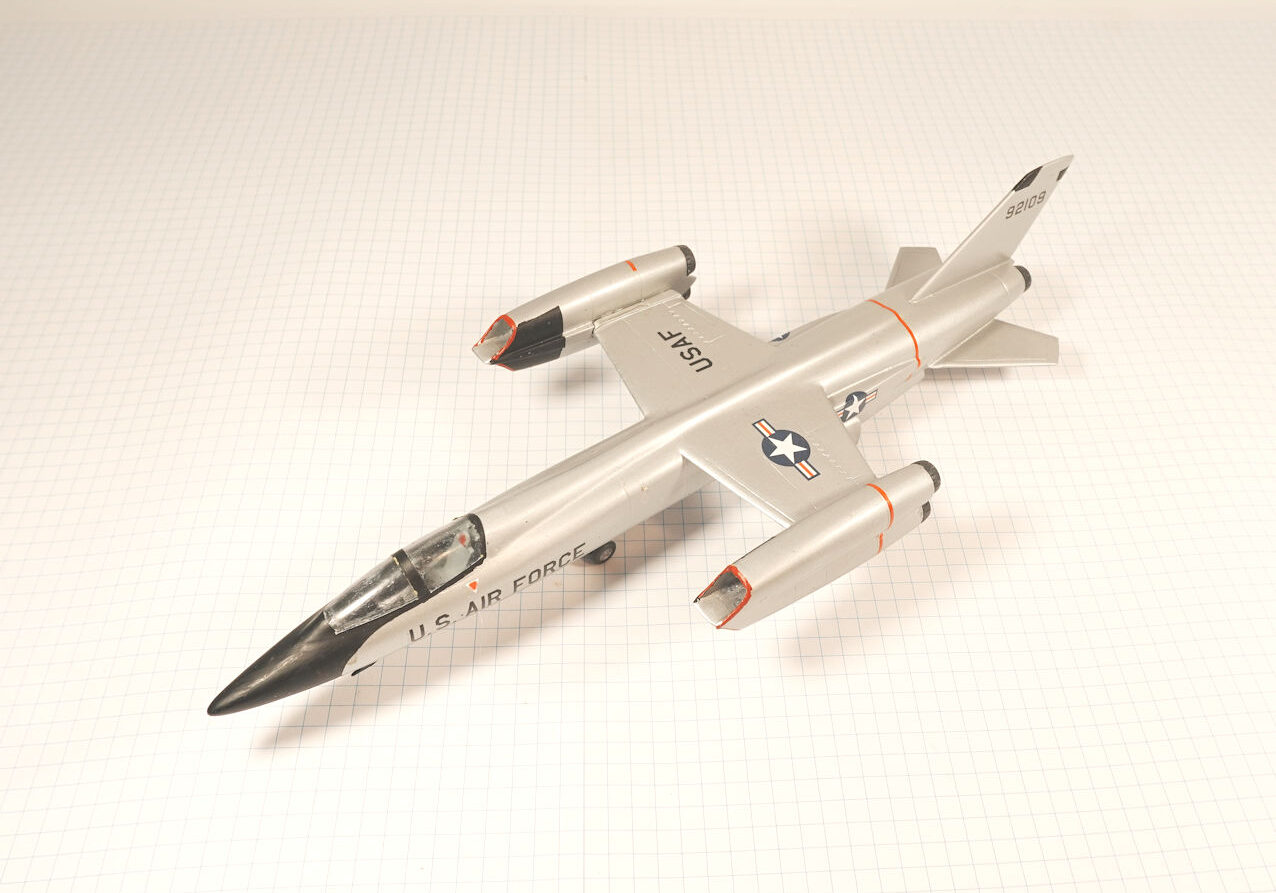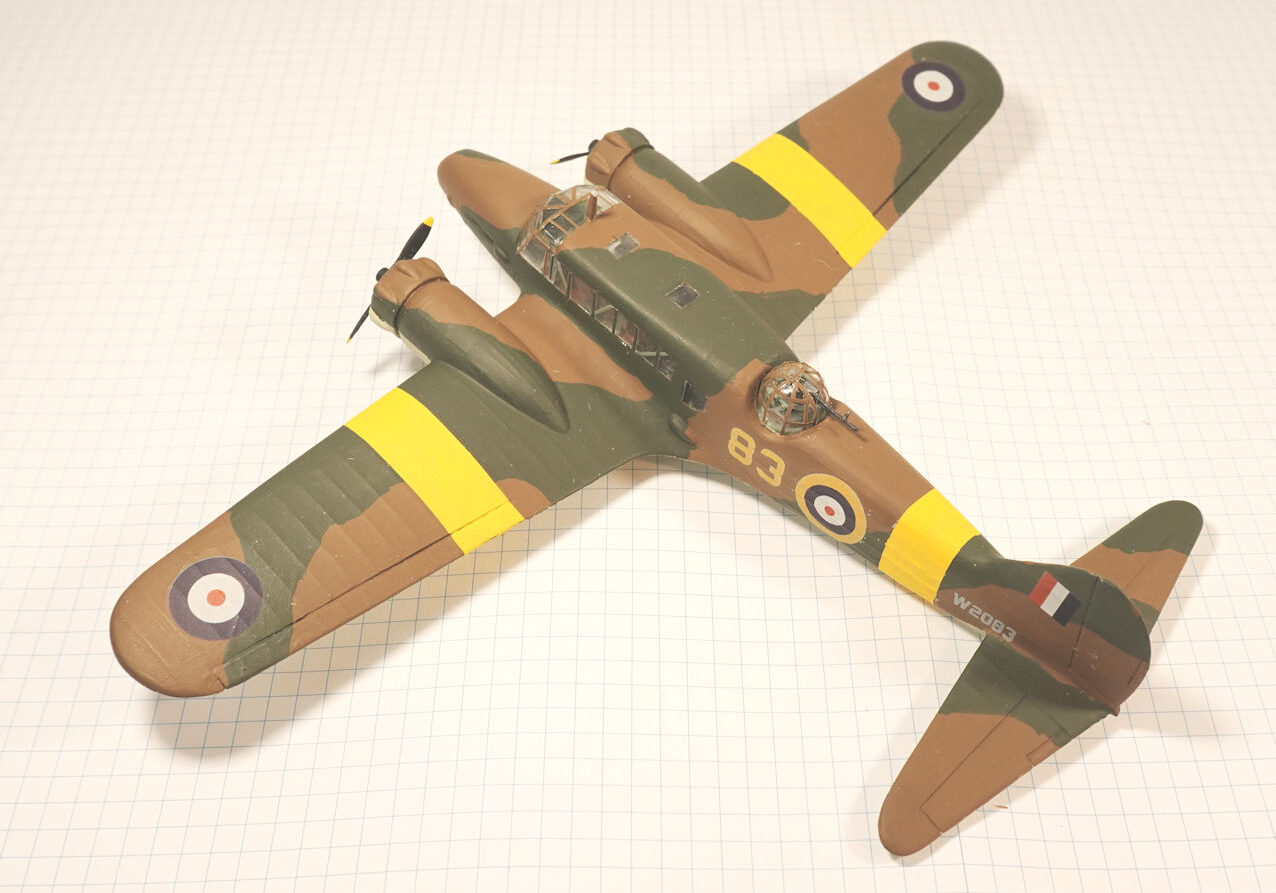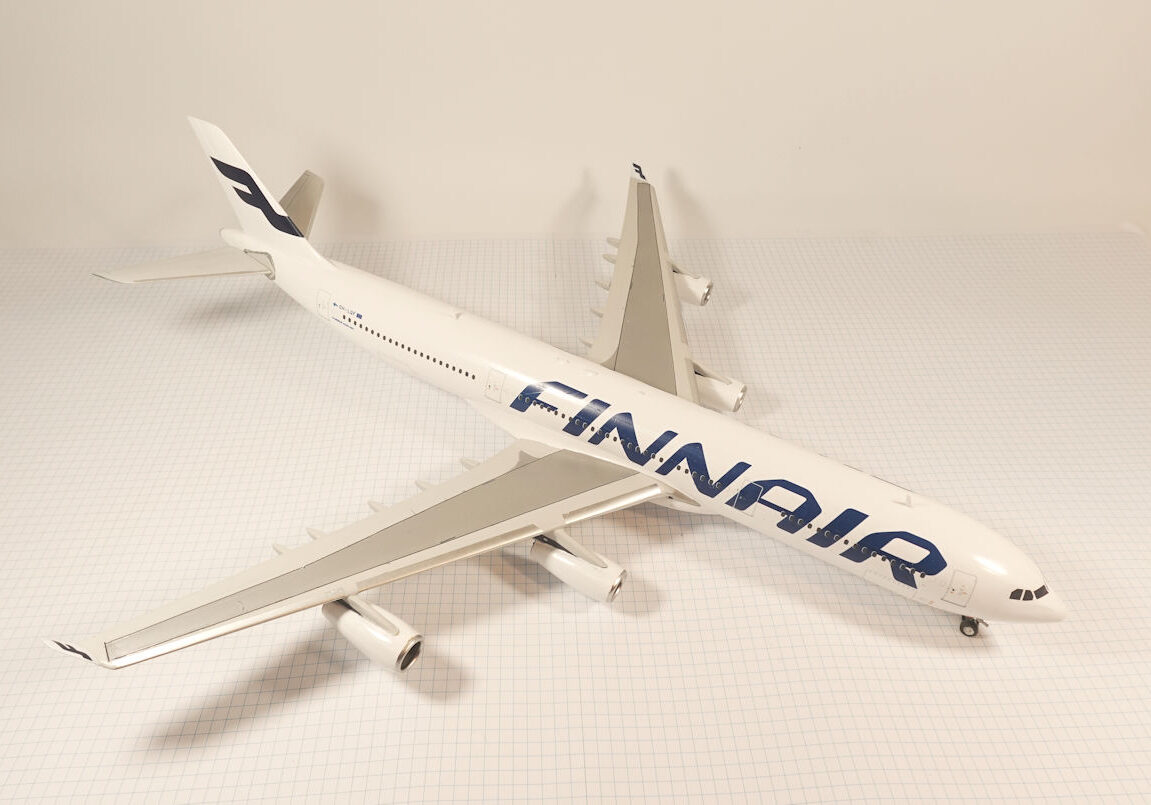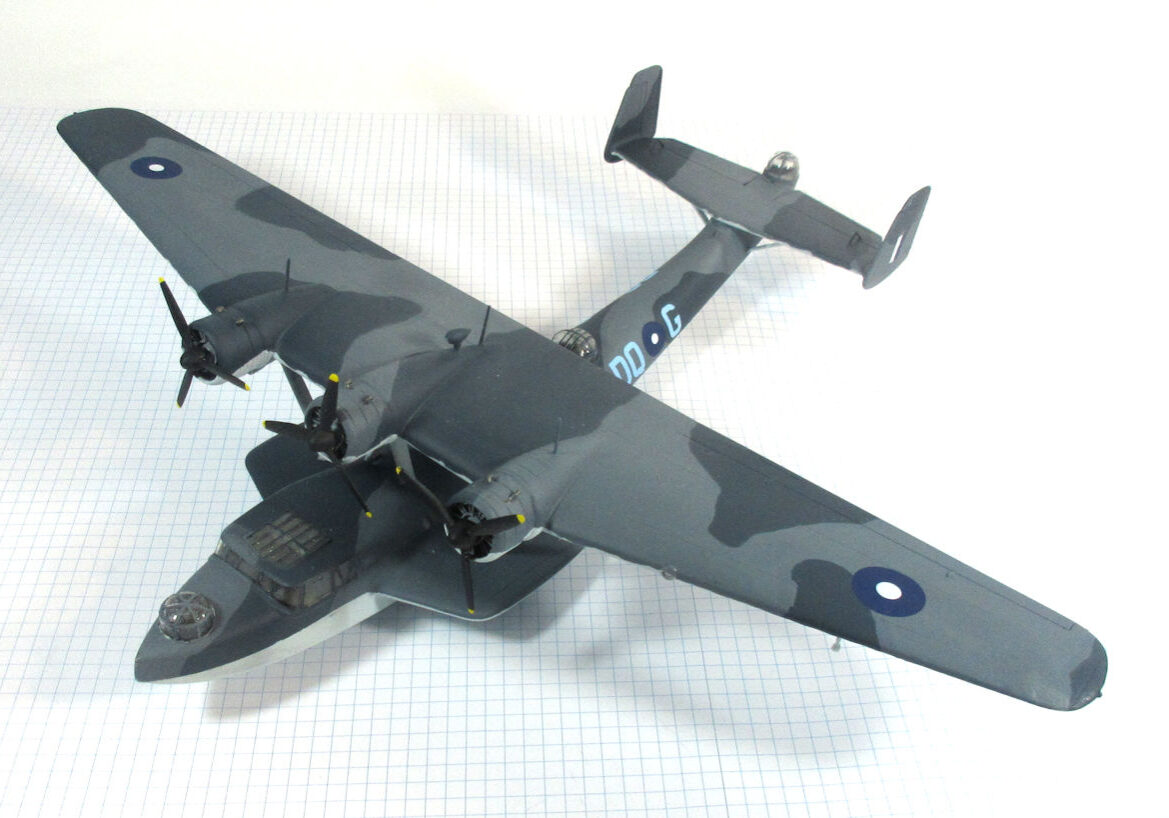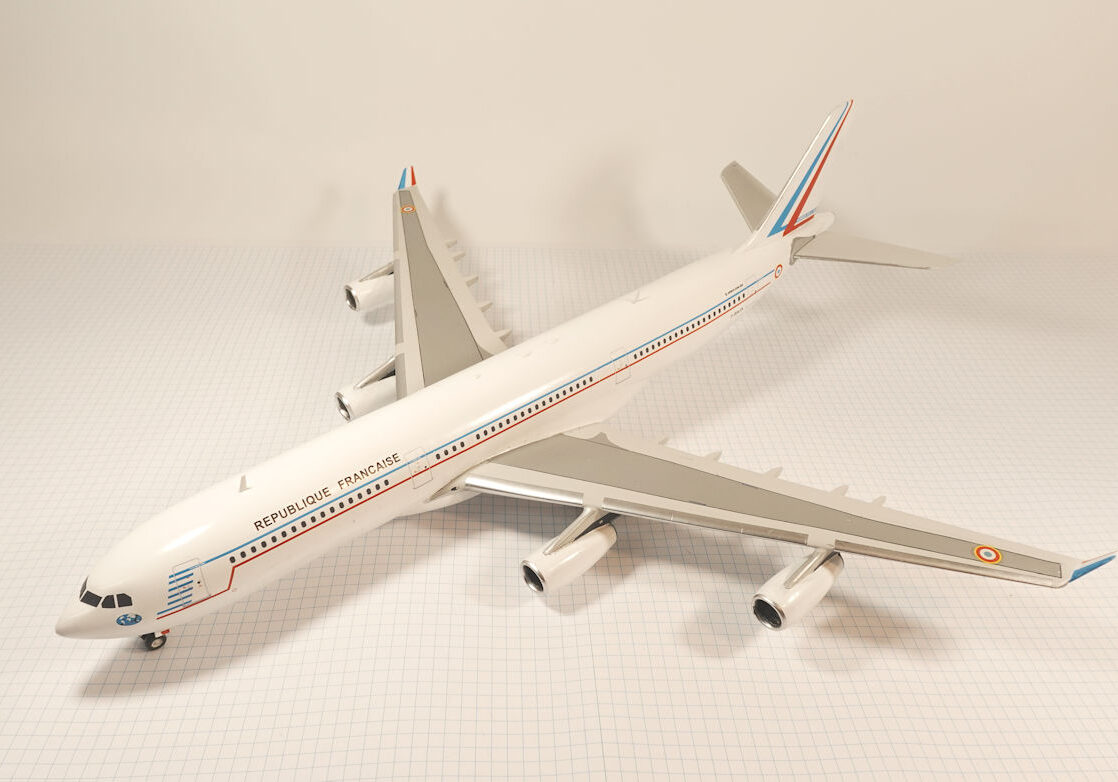History
The Douglas X-3 was an early experimental aeroplane designed to test flight in the mach 2 speed range. It proved not to have the anticipated speed but it was still important in exploring problems of supersonic flight.
Even before the first supersonic flights were made engineers were planning to explore the problems of Mach 2 flight.
Construction of the X-3 began in June 1949 and it made its first flight in October 1952.
However, the planned engines experienced serious problems so the X-3 was instead fitted with less powerful engines that restricted its performance so it only reached its top speed of mach 1.2 in a 30 degree dive in June 1953.
Despite this, it successfully tested the small wing platform later used in the F-104 and increased knowledge of some of the problems of high speed flight before it made its final flight in May 1956.
This model represents the sole X-3, c.1952.
Planet 1/72 kit completed by Leigh Edmonds in September 2007.


